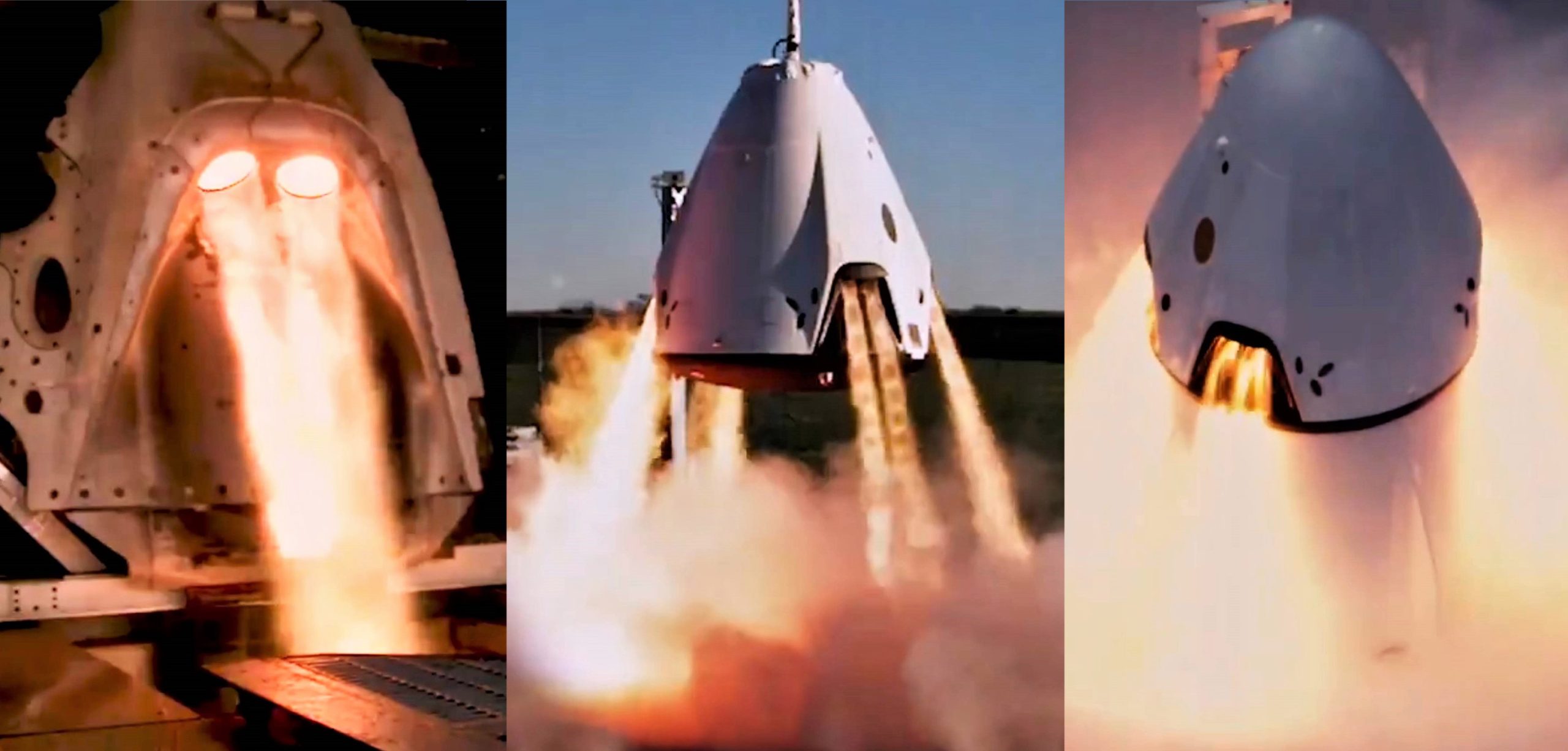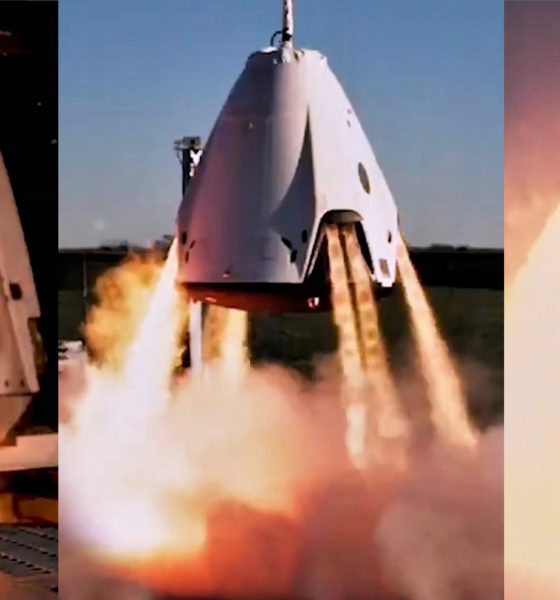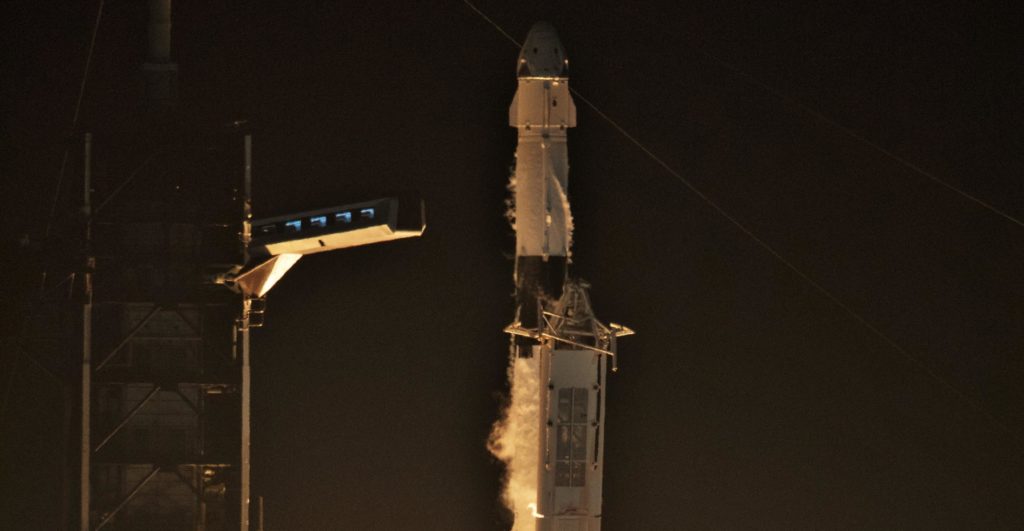

News
SpaceX's next Crew Dragon launch is delayed but that's actually good news
NASA says that SpaceX’s next big Crew Dragon flight test has slipped a bit further into 2020, a counterintuitively positive sign that the human-rated spacecraft’s next launch is firmly scheduled for the first month of the next decade.
Known as Crew Dragon’s In-Flight Abort (IFA) test, SpaceX opted to include the mission in its Commercial Crew contract, a decision NASA chose to leave up to its providers. Boeing, for example, chose not to perform a real-world in-flight abort test of its Starliner spacecraft, instead relying on a pad abort test and digital modeling to determine the spacecraft’s capabilities. NASA allowed this flexibility because it believes – at least theoretically – that it should be possible to determine whether a spacecraft can perform the most challenging abort scenarios without actually doing full-fidelity flight tests.
Given that NASA chose to perform an extremely expensive full-fidelity in-flight abort test with its own Orion spacecraft just a few months ago, one can’t exactly say that the space agency has chosen to reap what it’s sown, but with any luck, the Starliner spacecraft will never have to perform such an abort and find out how close Boeing’s modeling is to reality.
It’s also worth noting that despite the fact SpaceX elected to perform an extra abort test that will likely destroy an entire Falcon 9 rocket, Crew Dragon development will cost NASA $2 billion (40%) less than Starliner, while each operational Crew Dragon launch will also cost some $250 million (39%) less than a comparable Starliner launch.
As of December 18th, NASA says that SpaceX’s In-Flight Abort (IFA) test has slipped a week from January 4th to January 11th, 2020. Counterintuitively, that delay is actually an extremely encouraging sign that Crew Dragon’s next launch is quite firmly set for the first month of 2020. For reference, as NASA and SpaceX approached Crew Dragon’s Demo-1 orbital launch debut earlier this year, the mission was initially set for January 17th. Around three weeks later, NASA announced that Demo-1 had slipped to no earlier than (NET) “February”. Four weeks after that delay, NASA once again announced another delay to March 2nd, which would turn out to be the day that Crew Dragon really did reach orbit for the first time.

On the other hand, IFA – Crew Dragon’s second launch – had its first firm launch date (January 4th) announced by NASA on December 6th, 2019. Less than two weeks later, NASA says that the launch date has slipped by exactly one week to January 11th, less than four weeks from today. It’s entirely possible that SpaceX’s IFA test will slip further into 2020 in the coming weeks, but compared to Crew Dragon’s Demo-1 mission, both NASA and SpaceX appear to be far more confident in the schedule for Crew Dragon’s second launch.
Regardless of when exactly it lifts off, Crew Dragon’s In-Flight Abort is going to be an extremely challenging test for the spacecraft. Designed to simulate a near-worst-case abort scenario during launch, SpaceX will essentially trick Dragon into believing that Falcon 9 has failed around a minute and a half after launch. At that point, the rocket and spacecraft will be traveling as fast as Mach 2.5 (860 m/s, 1900 mph) and experiencing what is known as Max Q, the point of peak aerodynamic stress (referring to heating, buffeting, pressure, and more).
At that exact point, Crew Dragon capsule C205 will ignite all eight of its SuperDraco abort engines, almost instantaneously producing 130,000 lbf (570 kN) of thrust to send the spacecraft almost a kilometer (0.5 mi) away from Falcon 9 in just a few seconds. If Crew Dragon survives the ordeal, it will quickly detach its trunk section, flip around to face its heat shield towards the ground, and ultimately deploy parachutes before gently landing in the Atlantic Ocean.
SpaceX plans to recover and reuse the otherwise orbit-worthy capsule on a future mission, likely one of the company’s upcoming CRS2 space station resupply launches. Finally, if everything goes exactly as planned during the In-Flight Abort test and both NASA and SpaceX see no issues with the flown hardware or data the test produces, Crew Dragon Demo-2 – the spacecraft’s first astronaut launch – could potentially be ready for flight as early as February or March 2020.
Check out Teslarati’s Marketplace! We offer Tesla accessories, including for the Tesla Cybertruck and Tesla Model 3.

News
Tesla FSD fleet is nearing 7 billion total miles, including 2.5 billion city miles
As can be seen on Tesla’s official FSD webpage, vehicles equipped with the system have now navigated over 6.99 billion miles.

Tesla’s Full Self-Driving (Supervised) fleet is closing in on almost 7 billion total miles driven, as per data posted by the company on its official FSD webpage.
These figures hint at the massive scale of data fueling Tesla’s rapid FSD improvements, which have been quite notable as of late.
FSD mileage milestones
As can be seen on Tesla’s official FSD webpage, vehicles equipped with the system have now navigated over 6.99 billion miles. Tesla owner and avid FSD tester Whole Mars Catalog also shared a screenshot indicating that from the nearly 7 billion miles traveled by the FSD fleet, more than 2.5 billion miles were driven inside cities.
City miles are particularly valuable for complex urban scenarios like unprotected turns, pedestrian interactions, and traffic lights. This is also the difference-maker for FSD, as only complex solutions, such as Waymo’s self-driving taxis, operate similarly on inner-city streets. And even then, incidents such as the San Francisco blackouts have proven challenging for sensor-rich vehicles like Waymos.
Tesla’s data edge
Tesla has a number of advantages in the autonomous vehicle sector, one of which is the size of its fleet and the number of vehicles training FSD on real-world roads. Tesla’s nearly 7 billion FSD miles then allow the company to roll out updates that make its vehicles behave like they are being driven by experienced drivers, even if they are operating on their own.
So notable are Tesla’s improvements to FSD that NVIDIA Director of Robotics Jim Fan, after experiencing FSD v14, noted that the system is the first AI that passes what he described as a “Physical Turing Test.”
“Despite knowing exactly how robot learning works, I still find it magical watching the steering wheel turn by itself. First it feels surreal, next it becomes routine. Then, like the smartphone, taking it away actively hurts. This is how humanity gets rewired and glued to god-like technologies,” Fan wrote in a post on X.
News
Tesla starts showing how FSD will change lives in Europe
Local officials tested the system on narrow country roads and were impressed by FSD’s smooth, human-like driving, with some calling the service a game-changer for everyday life in areas that are far from urban centers.

Tesla has launched Europe’s first public shuttle service using Full Self-Driving (Supervised) in the rural Eifelkreis Bitburg-Prüm region of Germany, demonstrating how the technology can restore independence and mobility for people who struggle with limited transport options.
Local officials tested the system on narrow country roads and were impressed by FSD’s smooth, human-like driving, with some calling the service a game-changer for everyday life in areas that are far from urban centers.
Officials see real impact on rural residents
Arzfeld Mayor Johannes Kuhl and District Administrator Andreas Kruppert personally tested the Tesla shuttle service. This allowed them to see just how well FSD navigated winding lanes and rural roads confidently. Kruppert said, “Autonomous driving sounds like science fiction to many, but we simply see here that it works totally well in rural regions too.” Kuhl, for his part, also noted that FSD “feels like a very experienced driver.”
The pilot complements the area’s “Citizen Bus” program, which provides on-demand rides for elderly residents who can no longer drive themselves. Tesla Europe shared a video of a demonstration of the service, highlighting how FSD gives people their freedom back, even in places where public transport is not as prevalent.
What the Ministry for Economic Affairs and Transport says
Rhineland-Palatinate’s Minister Daniela Schmitt supported the project, praising the collaboration that made this “first of its kind in Europe” possible. As per the ministry, the rural rollout for the service shows FSD’s potential beyond major cities, and it delivers tangible benefits like grocery runs, doctor visits, and social connections for isolated residents.
“Reliable and flexible mobility is especially vital in rural areas. With the launch of a shuttle service using self-driving vehicles (FSD supervised) by Tesla in the Eifelkreis Bitburg-Prüm, an innovative pilot project is now getting underway that complements local community bus services. It is the first project of its kind in Europe.
“The result is a real gain for rural mobility: greater accessibility, more flexibility and tangible benefits for everyday life. A strong signal for innovation, cooperation and future-oriented mobility beyond urban centers,” the ministry wrote in a LinkedIn post.
News
Tesla China quietly posts Robotaxi-related job listing
Tesla China is currently seeking a Low Voltage Electrical Engineer to work on circuit board design for the company’s autonomous vehicles.

Tesla has posted a new job listing in Shanghai explicitly tied to its Robotaxi program, fueling speculation that the company is preparing to launch its dedicated autonomous ride-hailing service in China.
As noted in the listing, Tesla China is currently seeking a Low Voltage Electrical Engineer to work on circuit board design for the company’s autonomous vehicles.
Robotaxi-specific role
The listing, which was shared on social media platform X by industry watcher @tslaming, suggested that Tesla China is looking to fill the role urgently. The job listing itself specifically mentions that the person hired for the role will be working on the Low Voltage Hardware team, which would design the circuit boards that would serve as the nervous system of the Robotaxi.
Key tasks for the role, as indicated in the job listing, include collaboration with PCB layout, firmware, mechanical, program management, and validation teams, among other responsibilities. The role is based in Shanghai.
China Robotaxi launch
China represents a massive potential market for robotaxis, with its dense urban centers and supportive policies in select cities. Tesla has limited permission to roll out FSD in the country, though despite this, its vehicles have been hailed as among the best in the market when it comes to autonomous features. So far, at least, it appears that China supports Tesla’s FSD and Robotaxi rollout.
This was hinted at in November, when Tesla brought the Cybercab to the 8th China International Import Expo (CIIE) in Shanghai, marking the first time that the autonomous two-seater was brought to the Asia-Pacific region. The vehicle, despite not having a release date in China, received a significant amount of interest among the event’s attendees.








